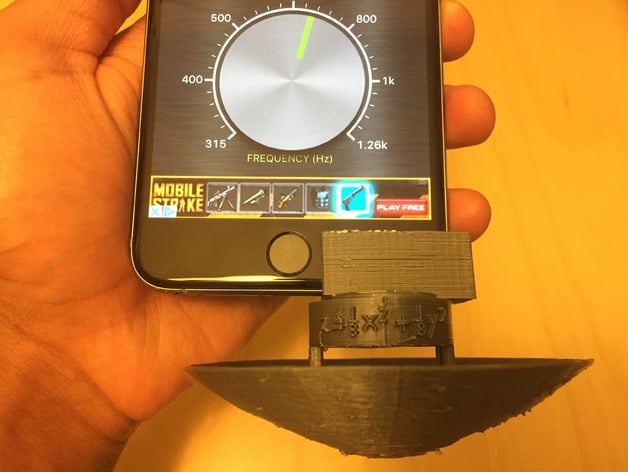
Acoustics Experimentation Kit Using Conic Sections
thingiverse
This lesson plan is designed to teach high school students about the reflective properties of conic sections and how they can be used to direct sound waves. The plan involves a combination of theoretical knowledge, practical experimentation, and mathematical analysis. Here's a breakdown of the lesson plan: **Theory** * Introduction to conic sections (circles, ellipses, parabolas, hyperbolas) * Explanation of reflective properties of conic sections * Importance of focal points in conic sections **Experimentation** * Students use 3D printed models of various conic sections (parabolic director, hyperbolic reflector, etc.) to experiment with sound reflection * Students observe and record the behavior of sound waves when reflected off different conic sections **Mathematical Analysis** * Students graph equations for each conic section using a graphing calculator or software * Students identify focal points on each graph and analyze the relationship between sound output and focal points * Optional: students can also calculate derivatives to analyze angle of incidence and reflection **Assessment** * Students take notes and record observations during the experiment * Teacher reviews student notes and confirms results * Rubric for grading based on student understanding and mathematical analysis This lesson plan is well-structured and provides a clear progression from theoretical knowledge to practical experimentation to mathematical analysis. The use of 3D printed models and graphing calculators allows students to visualize and explore the reflective properties of conic sections in a hands-on way. Some potential suggestions for improvement: * Consider adding more visual aids, such as diagrams or images, to help students understand complex concepts * Provide additional resources or references for students who want to learn more about conic sections * Encourage students to ask questions and engage in discussion during the experiment Overall, this lesson plan provides a engaging and interactive way for high school students to learn about conic sections and their reflective properties.
With this file you will be able to print Acoustics Experimentation Kit Using Conic Sections with your 3D printer. Click on the button and save the file on your computer to work, edit or customize your design. You can also find more 3D designs for printers on Acoustics Experimentation Kit Using Conic Sections.
